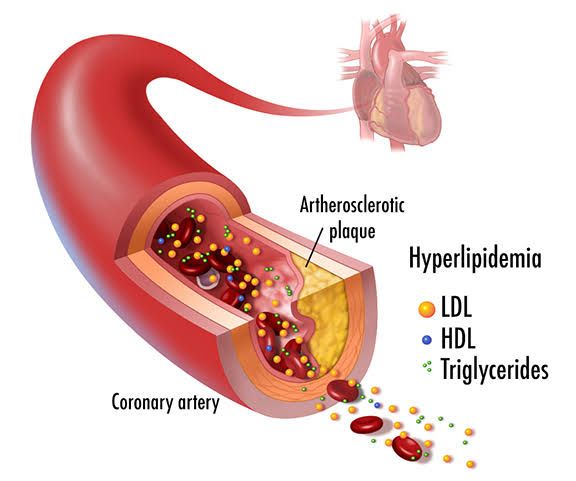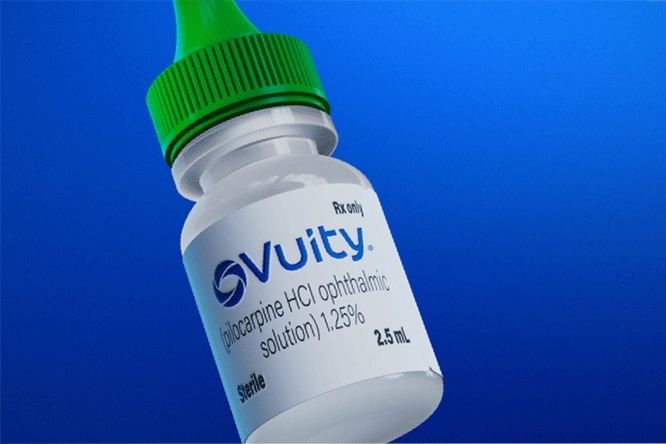
Hyperlipidemia, characterized by elevated levels of lipids in the blood, is a significant risk factor for cardiovascular diseases.
Therapeutic Strategies for the Treatment of Hyperlipidemia
1. Lifestyle Modifications
The first line of treatment for hyperlipidemia involves therapeutic lifestyle changes (TLC). These modifications are essential for managing cholesterol levels and reducing cardiovascular risk. Key components include:
- Dietary Changes: Adopting a heart-healthy diet is crucial. This includes reducing saturated fats and trans fats, which can elevate LDL cholesterol levels. The American Heart Association recommends limiting saturated fat to less than 6% of daily calories and avoiding trans fats altogether. A diet rich in fruits, vegetables, whole grains, lean proteins (such as poultry and fish), nuts, and healthy oils (like olive oil) is encouraged.
- Physical Activity: Regular exercise can help raise HDL (good) cholesterol while lowering LDL (bad) cholesterol and triglycerides. The recommendation is at least 150 minutes of moderate-intensity aerobic activity per week.
- Weight Management: Achieving and maintaining a healthy weight can significantly impact lipid levels. Even modest weight loss can improve cholesterol profiles.
- Smoking Cessation: Quitting smoking improves HDL cholesterol levels and benefits overall cardiovascular health.
2. Pharmacologic Treatments
When lifestyle modifications alone are insufficient to manage hyperlipidemia, pharmacologic treatments may be necessary. The following classes of medications are commonly used:
- Statins: Statins are the most widely prescribed medications for lowering LDL cholesterol. They work by inhibiting HMG-CoA reductase, an enzyme involved in cholesterol production in the liver. Statins have strong evidence supporting their use in both primary and secondary prevention of cardiovascular disease.
- Ezetimibe: This medication works by reducing the absorption of cholesterol from the intestine. It is often used in conjunction with statins for patients who require additional LDL-lowering effects.
- PCSK9 Inhibitors: These newer agents significantly lower LDL cholesterol levels by enhancing the liver’s ability to remove LDL from the blood. They are typically reserved for patients with familial hypercholesterolemia or those who cannot tolerate statins.
- Fibrates: Primarily used to lower triglyceride levels, fibrates may also have a modest effect on increasing HDL cholesterol but have not been shown to reduce all-cause mortality when used alone.
- Niacin: Niacin can help increase HDL cholesterol but has not demonstrated a clear benefit in reducing cardiovascular events when added to statin therapy.
- Omega-3 Fatty Acids: These supplements may be beneficial for lowering triglycerides but should be considered as adjunctive therapy rather than first-line treatment.
3. Risk Stratification and Monitoring
Effective management of hyperlipidemia requires ongoing assessment of cardiovascular risk factors:
- Risk Assessment Tools: Tools like the ASCVD Risk Calculator help determine a patient’s 10-year risk for coronary events, guiding treatment decisions regarding initiation or intensification of therapy.
- Regular Monitoring: Lipid panels should be monitored periodically to assess response to therapy and make necessary adjustments based on treatment goals.
In summary, the therapeutic strategies for treating hyperlipidemia encompass a combination of lifestyle changes and pharmacologic interventions tailored to individual patient needs based on their risk profiles and response to initial treatments.
Indications for Using Antihyperlipidemic Drugs
Antihyperlipidemic drugs are primarily indicated for the management of hyperlipidemia, which refers to elevated levels of lipids in the blood, particularly cholesterol and triglycerides. The use of these medications is guided by several clinical factors and risk assessments. Below are the key indications for prescribing antihyperlipidemic agents:
1. Elevated LDL Cholesterol Levels
One of the most common reasons for initiating antihyperlipidemic therapy is the presence of high levels of low-density lipoprotein (LDL) cholesterol, often referred to as “bad” cholesterol. Elevated LDL levels are associated with an increased risk of atherosclerosis, coronary artery disease, heart attacks, and strokes. Guidelines recommend starting treatment with statins or other lipid-lowering agents when LDL cholesterol exceeds certain thresholds, especially in individuals with additional cardiovascular risk factors.
2. Cardiovascular Disease Prevention
Patients with a history of cardiovascular events such as myocardial infarction (heart attack) or stroke are prime candidates for antihyperlipidemic therapy. Statins are frequently prescribed not only to lower LDL cholesterol but also to provide additional cardiovascular benefits through their pleiotropic effects, which include improving endothelial function and reducing inflammation.
3. Familial Hypercholesterolemia
Individuals diagnosed with familial hypercholesterolemia—a genetic disorder characterized by extremely high cholesterol levels—often require aggressive lipid-lowering therapy from a young age. These patients may need higher doses of statins or combination therapies involving PCSK9 inhibitors or other classes of antihyperlipidemics to achieve target lipid levels.
4. Diabetes Management
Patients with diabetes have an increased risk of cardiovascular disease, making lipid management crucial in this population. Current guidelines suggest that adults aged 40-75 years with diabetes should be considered for statin therapy regardless of baseline LDL levels due to their heightened risk profile.
5. Metabolic Syndrome
Individuals diagnosed with metabolic syndrome—characterized by obesity, hypertension, dysglycemia, and dyslipidemia—are also at increased risk for cardiovascular diseases. Antihyperlipidemic drugs can help manage lipid abnormalities associated with this syndrome and reduce overall cardiovascular risk.
6. High Triglyceride Levels
In cases where triglyceride levels exceed 500 mg/dL, there is a significant risk for pancreatitis; thus, triglyceride-lowering medications may be indicated alongside lifestyle modifications. Fibric acid derivatives and omega-3 fatty acids are commonly used in these scenarios.
7. Secondary Prevention in High-Risk Patients
For patients who have multiple risk factors for cardiovascular disease (such as smoking, hypertension, family history), even moderate elevations in cholesterol may warrant treatment to prevent future events.
In summary, antihyperlipidemic drugs are indicated based on specific clinical criteria including elevated LDL cholesterol levels, history of cardiovascular disease, genetic predispositions like familial hypercholesterolemia, diabetes status, metabolic syndrome presence, high triglyceride levels, and overall patient risk profiles.
Classification of Drugs Used in the Treatment of Hyperlipidemias
1. Statins
Statins, also known as HMG CoA reductase inhibitors, are the most commonly prescribed medications for lowering cholesterol levels. They work by inhibiting the enzyme responsible for cholesterol production in the liver, leading to a decrease in LDL (low-density lipoprotein) cholesterol and triglycerides while increasing HDL (high-density lipoprotein) cholesterol. Common statins include:
- Atorvastatin (Lipitor®)
- Simvastatin (Zocor®)
- Rosuvastatin (Crestor®)
- Pravastatin (Pravachol®)
- Lovastatin (Mevacor®, Altoprev™)
- Fluvastatin (Lescol®)
- Pitavastatin (Livalo®)
2. Non-statin Medications
For patients who do not achieve adequate cholesterol control with statins or experience side effects, non-statin medications may be prescribed. These include:
- Ezetimibe: Ezetimibe works by reducing the absorption of cholesterol from the intestine, thereby lowering total cholesterol levels.
- Bile Acid Sequestrants: These agents bind bile acids in the intestine, causing the body to use more cholesterol to produce new bile acids, which lowers blood cholesterol levels. Examples include Cholestyramine and Colesevelam.
- PCSK9 Inhibitors: This newer class of drugs targets a specific protein that affects LDL receptors in the liver, leading to lower LDL levels. They are typically administered via injection and are used for patients at high risk of cardiovascular disease who have not responded adequately to other treatments.
- Fibric Acid Derivatives: Also known as fibrates, these medications primarily reduce triglyceride levels and can increase HDL cholesterol. Common examples include Fenofibrate and Gemfibrozil.
3. Combination Therapies
In some cases, healthcare providers may prescribe combinations of these medications to achieve better lipid control. For example:
- Simvastatin/ezetimibe (Vytorin®)
- Lovastatin/niacin extended-release (Advicor®)
Each class of medication has its own mechanism of action and potential side effects, making it essential for healthcare professionals to tailor treatment plans based on individual patient needs and risk factors.
Mechanism of Action of HMG-CoA Reductase Inhibitors
HMG-CoA reductase inhibitors, commonly known as statins, work by inhibiting the enzyme 3-hydroxy-3-methyl-glutaryl-coenzyme A (HMG-CoA) reductase. This enzyme is crucial in the cholesterol biosynthesis pathway, specifically in the conversion of HMG-CoA to mevalonate, which is a precursor for cholesterol synthesis. By blocking this step, statins effectively reduce the endogenous production of cholesterol in the liver.
The reduction in cholesterol levels leads to an upregulation of LDL receptors on hepatocyte membranes. This increased expression enhances the clearance of low-density lipoprotein (LDL) from the bloodstream, thereby lowering circulating LDL cholesterol levels. Additionally, statins have been shown to have pleiotropic effects, including improving endothelial function, stabilizing atherosclerotic plaques, and exerting anti-inflammatory effects.
Values and Indications
Statins are primarily indicated for:
- Primary Hyperlipidemia: To lower elevated total cholesterol and LDL levels.
- Secondary Prevention of Cardiovascular Disease: In patients with established cardiovascular disease (CVD), such as those who have had myocardial infarctions or strokes.
- Diabetes Management: For primary prevention in diabetic patients aged 40-75 years with additional risk factors for CVD.
- Familial Hypercholesterolemia: A genetic condition characterized by extremely high cholesterol levels.
The values associated with statin therapy include significant reductions in cardiovascular morbidity and mortality rates due to their lipid-lowering effects and other beneficial actions on vascular health.
Contraindications
Statins are contraindicated in several situations:
- Active Liver Disease: Patients with hepatic impairment or transaminase elevations greater than three times the upper limit of normal should avoid statins due to potential hepatotoxicity.
- Pregnancy and Lactation: Statins are classified as Category X drugs; they can cause fetal harm and should not be used during pregnancy or breastfeeding.
- Hypersensitivity Reactions: Individuals with a known allergy to any component of a statin medication should not take these drugs.
Adverse Effects
While generally well-tolerated, statins can cause several adverse effects:
- Muscle-related Symptoms: These can range from mild myalgia to severe conditions like rhabdomyolysis, characterized by muscle breakdown leading to kidney damage.
- Liver Enzyme Elevations: Transient increases in liver enzymes may occur; regular monitoring is recommended.
- Gastrointestinal Disturbances: Some patients report nausea, diarrhea, or constipation.
- Increased Risk of Diabetes: There is evidence suggesting that statin use may slightly increase the risk of developing type 2 diabetes mellitus.
Other less common side effects include cognitive issues such as memory loss or confusion.
Examples of Commonly Used Drugs in This Group
Commonly prescribed HMG-CoA reductase inhibitors include:
- Atorvastatin (Lipitor): One of the most widely used statins for lowering LDL cholesterol and reducing cardiovascular events.
- Simvastatin (Zocor): Another popular choice that is often used for both primary and secondary prevention strategies.
- Rosuvastatin (Crestor): Known for its potency at lower doses compared to other statins.
These medications vary in their potency and pharmacokinetics but share a common mechanism through HMG-CoA reductase inhibition.
In summary, HMG-CoA reductase inhibitors play a critical role in managing dyslipidemia and preventing cardiovascular diseases through their mechanism of action targeting cholesterol synthesis pathways while being mindful of their indications, contraindications, potential adverse effects, and examples available on the market today.
Mechanism of Action, Clinical Uses, and Toxicity of Fabric Acid Derivatives
Mechanism of Action
Fabric acid derivatives, commonly known as fibrates, are a class of medications primarily used to lower lipid levels in patients with dyslipidemia. The primary mechanism by which fibrates exert their effects is through the activation of peroxisome proliferator-activated receptors (PPARs), specifically PPAR-alpha.
- Activation of PPAR-alpha: Fibrates bind to PPAR-alpha, a type of nuclear receptor that regulates gene expression involved in lipid metabolism. Upon binding, this receptor undergoes a conformational change that allows it to interact with specific response elements in the DNA.
- Increased Lipoprotein Lipase Activity: This activation leads to an increase in the expression of lipoprotein lipase (LPL), an enzyme crucial for the hydrolysis of triglycerides in lipoproteins. Increased LPL activity results in enhanced clearance of triglyceride-rich lipoproteins from the bloodstream.
- Reduction of Triglycerides and Increase in HDL: Fibrates primarily reduce serum triglyceride levels and can also lead to an increase in high-density lipoprotein (HDL) cholesterol levels. They achieve this by promoting fatty acid oxidation and reducing hepatic production of triglycerides.
- Modulation of Apolipoproteins: Fibrates also influence the synthesis and degradation of apolipoproteins, particularly apolipoprotein A-I and A-II, which play significant roles in HDL metabolism.
Overall, the net effect is a favorable alteration in lipid profiles, making fibrates effective agents for managing hyperlipidemia.
Clinical Uses
Fibrates are primarily indicated for:
- Hypertriglyceridemia: They are particularly effective in patients with elevated triglyceride levels (>500 mg/dL) to reduce the risk of pancreatitis.
- Mixed Dyslipidemia: Fibrates can be used when both triglycerides and low-density lipoprotein (LDL) cholesterol levels are elevated.
- Low HDL Cholesterol Levels: In patients with low HDL cholesterol who are at increased cardiovascular risk, fibrates can help raise HDL levels.
- Diabetic Dyslipidemia: Fibrates may be beneficial for diabetic patients who often present with dyslipidemic profiles characterized by high triglycerides and low HDL cholesterol.
- Combination Therapy: Fibrates can be used alongside statins or other lipid-lowering agents for additive effects on lipid profiles; however, caution is advised due to potential drug interactions and increased risk of myopathy or rhabdomyolysis when combined with statins.
The most commonly prescribed fibrate medications include fenofibrate and gemfibrozil.
Toxicity
While generally well-tolerated, fibrates can have side effects and toxicities:
- Gastrointestinal Disturbances: Common side effects include abdominal pain, nausea, diarrhea, and dyspepsia.
- Muscle-Related Toxicities: There is a risk of muscle-related adverse effects such as myopathy or rhabdomyolysis, especially when used in conjunction with statins or in patients with renal impairment.
- Hepatotoxicity: Elevated liver enzymes may occur; thus, liver function tests should be monitored periodically during treatment.
- Gallstones Formation: Fibrates can increase biliary cholesterol saturation leading to gallstone formation; hence they should be used cautiously in individuals predisposed to gallbladder disease.
- Renal Impairment Considerations: Dose adjustments may be necessary for patients with renal impairment due to altered pharmacokinetics leading to increased drug exposure and toxicity risks.
In summary, while fabric acid derivatives like fibrates play a crucial role in managing dyslipidemia through their action on lipid metabolism via PPAR-alpha activation, they must be prescribed judiciously considering their potential side effects and interactions with other medications.
Role of Drugs that Reduce Fat Absorption from the GIT: Ezetimibe and Orlistat
Introduction to Fat Absorption Inhibition
The gastrointestinal tract (GIT) plays a crucial role in the digestion and absorption of nutrients, including fats. Excessive fat absorption can lead to obesity and related metabolic disorders. To combat these issues, certain pharmacological agents have been developed to inhibit fat absorption, thereby aiding in weight management and improving lipid profiles.
Ezetimibe: Mechanism and Use
Ezetimibe is primarily known as a cholesterol absorption inhibitor. It works by selectively inhibiting the intestinal absorption of cholesterol at the brush border of the small intestine. This mechanism reduces the amount of cholesterol that enters circulation, leading to lower levels of low-density lipoprotein (LDL) cholesterol in the bloodstream.
- Mechanism of Action: Ezetimibe targets the Niemann-Pick C1-like 1 (NPC1L1) protein, which is essential for the uptake of dietary cholesterol. By blocking this protein, ezetimibe decreases both dietary and biliary cholesterol absorption.
- Clinical Use: Ezetimibe is often prescribed in combination with statins for patients who require additional LDL reduction beyond what statins alone can provide. It is particularly useful for individuals with familial hypercholesterolemia or those who are statin-intolerant.
- Impact on Weight Management: While ezetimibe’s primary function is to lower cholesterol levels rather than directly promote weight loss, its ability to reduce fat absorption may indirectly contribute to weight management when combined with lifestyle changes.
Orlistat: Mechanism and Use
Orlistat is a drug specifically designed for weight management through the inhibition of fat absorption.
- Mechanism of Action: Orlistat works by inhibiting pancreatic lipase, an enzyme necessary for the breakdown of dietary fats into absorbable free fatty acids. When this enzyme is inhibited, approximately 30% of dietary fat cannot be absorbed and is instead excreted undigested in feces.
- Clinical Use: Orlistat is indicated for obesity treatment in conjunction with a reduced-calorie diet and exercise program. It has been shown to facilitate significant weight loss compared to placebo treatments over extended periods.
- Side Effects and Considerations: Common side effects include gastrointestinal issues such as oily stools, flatulence, and fecal urgency due to unabsorbed fats passing through the digestive system. Patients are advised to adhere to a low-fat diet while taking orlistat to minimize these side effects.
- Long-term Efficacy: Studies indicate that orlistat can help maintain weight loss over time when combined with lifestyle modifications, making it a valuable tool in obesity management strategies.
Comparative Analysis
While both ezetimibe and orlistat reduce fat absorption from the GIT, their mechanisms differ significantly:
- Ezetimibe primarily targets cholesterol absorption without directly affecting overall fat intake.
- Orlistat, on the other hand, inhibits fat digestion itself, leading to decreased caloric intake from fats.
Both medications serve distinct purposes; ezetimibe focuses on lipid profile improvement while orlistat aids in weight loss efforts through direct fat malabsorption.
Conclusion
In summary, drugs like ezetimibe and orlistat play important roles in managing conditions related to excessive fat absorption from the gastrointestinal tract. Ezetimibe primarily lowers cholesterol levels by inhibiting its intestinal uptake, whereas orlistat directly reduces caloric intake from dietary fats by preventing their digestion and absorption. Their use should be tailored based on individual patient needs and health goals.







